
koyopil
Em | 23 | ✡︎ ✞
22 posts
Latest Posts by koyopil
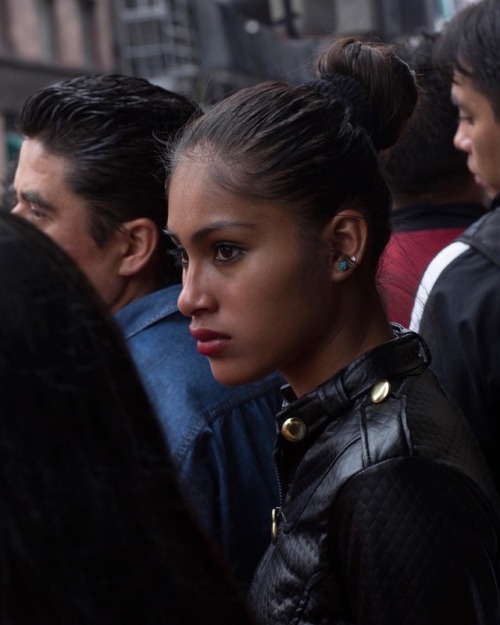
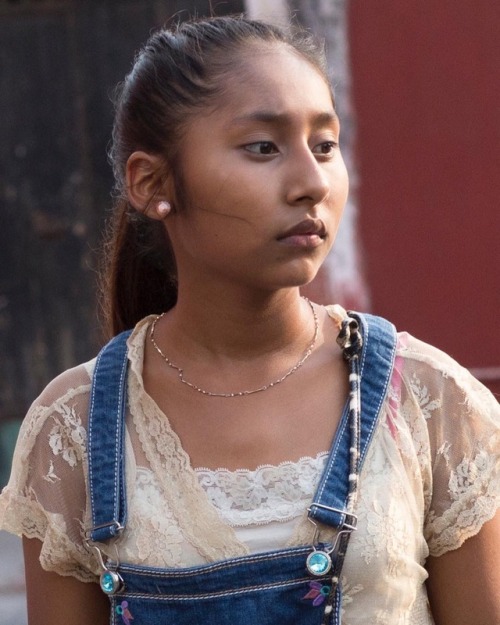

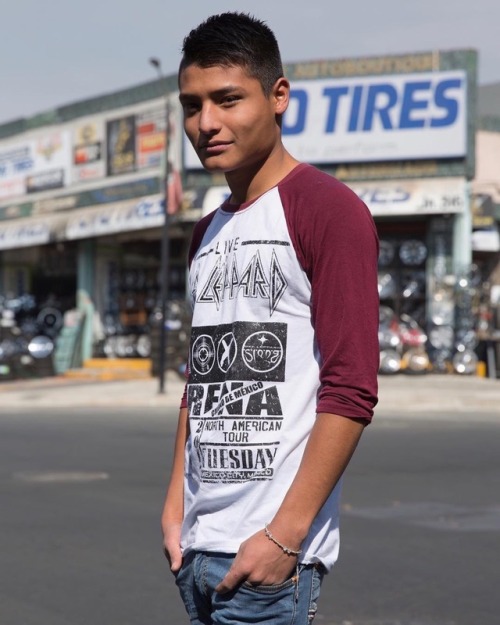



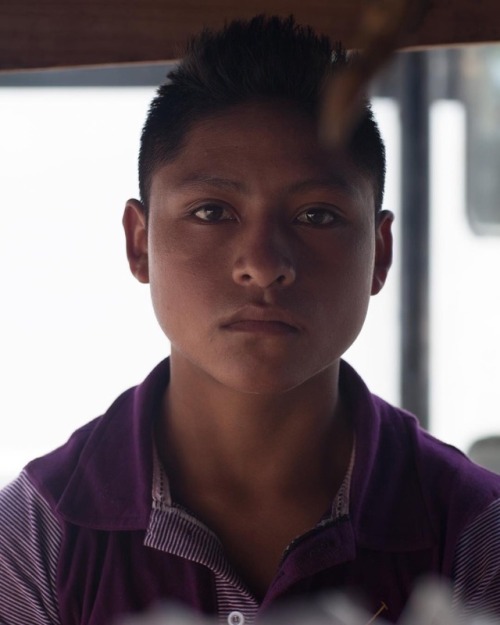
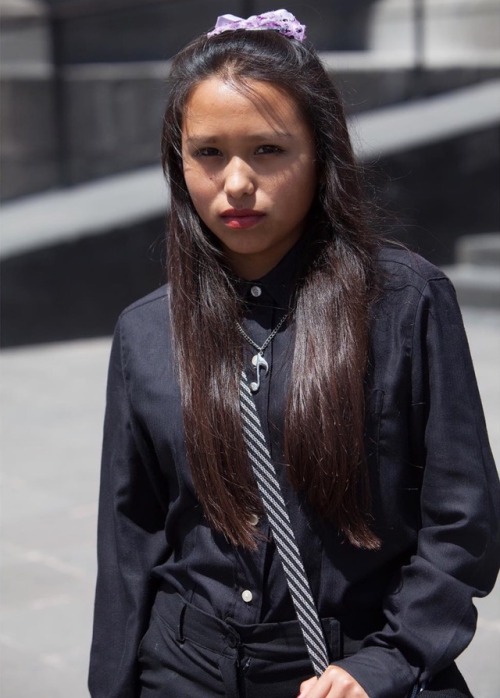
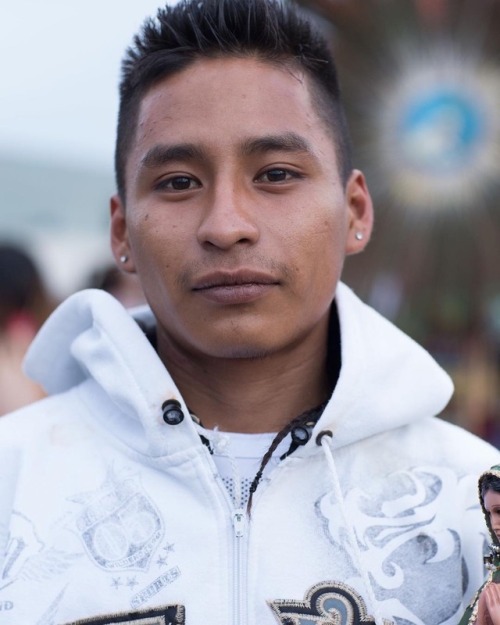
Capturing Mexican Beauty as an Act of Self-Love
Dorian López’s MexicanoMX is more than a photo project, it’s a defiant act of self-love.
By capturing the beauty of everyday Mexicans, López’s photos destroy the false and archaic notion that only light-skinned people are pretty.
In MexicanoMX, brown skin, black hair, Indigenous eyes, noses and lips are celebrated — and in doing so, restores for many a positive self-image. And that’s a beautiful thing.
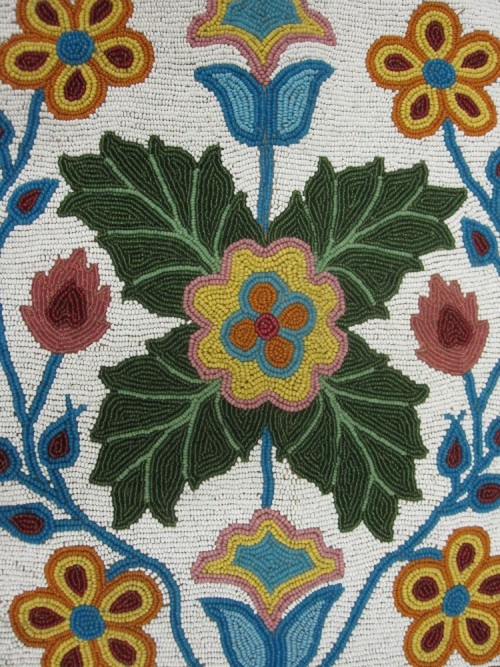

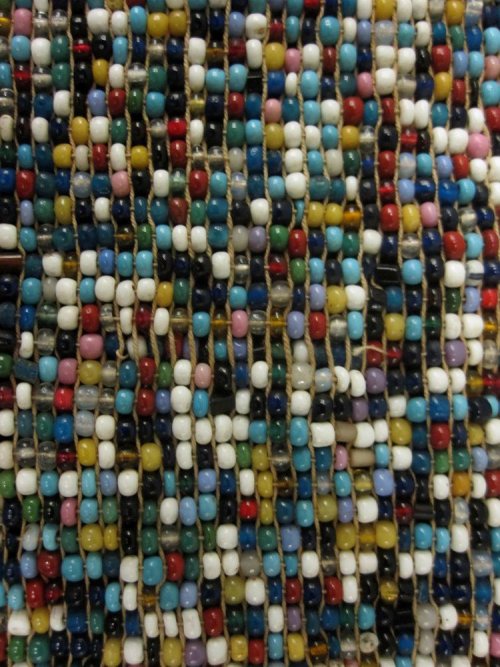
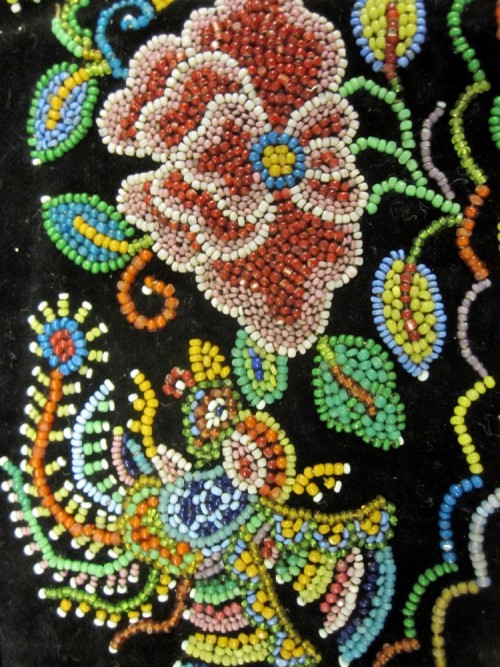

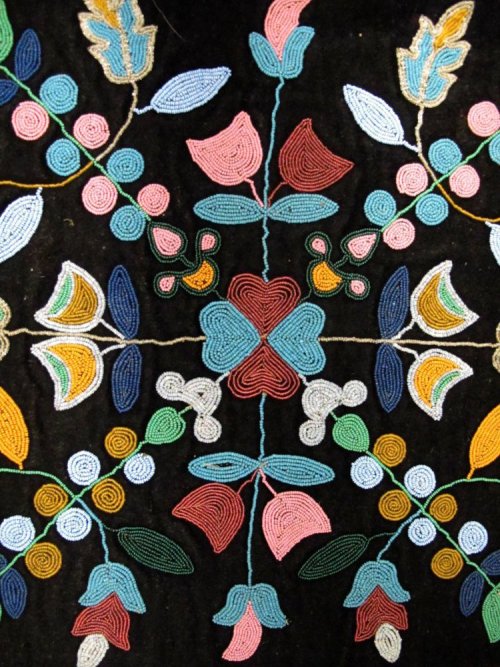

Ojibwe / Northeast Woodlands beadwork in the National Museum of the American Indian.
I have tíos I never got to know. primos I never got to know. abuelos I never got to know. I have family that is mine, but is not mine. And I can’t dwell on it, or it’ll break me.

Ahuitzotl
Origin: Aztec and Mayan people (Mexico, Guatemala, Belize, Western edges of Honduras, Western edges of El Salvador, Nicaragua) The Ahuitzotl looks like a small dog with streaks on its head, small ears and a hand at the tip of its tail. The Ahuitzotl submerges itself in a lake or stream and begin to wail like a small child or a frightened woman. A passerby would hear the sound and would rush to the rescue of the 'victim'. Once approached the water the victim would be strangled by the creature's infamous tail-hand and then the creature would tear out the victim's eyes, nails and teeth and eat them. The Ahuitzotl would then toss the lifeless body onto the riverbank and restart its wailing
Knowing you're native Mexican and wanting to reconnect with your native roots to preserve your cultural identity vs being a no sabo 2nd gen American kid FIGHT
I think what makes learning Spanish so daunting is my fear of ineptitude. I’m so accustomed to being able to express myself fluently in English. It’s one of the things I’m known for among my friends and family. I have a reputation as a walking dictionary and with such a vast vocabulary at my disposal, I’m able to convey exactly what I mean with precision.
But in Spanish? I speak like a small child. And it makes me feel like the child my father never knew. I flounder about in his native language, mixing up tenses and accidentally using false cognates instead of the word I mean.
And, worse, it’s Spanish. Not Nahuatl. Only 10% of my ancestry on my father’s side is from Spain. The other 40% is Nahua, likely Tlaxcaltec.
also made these! I think I’m gonna modify the blue earrings by putting the beads on a wire hoop and hanging them on huggy hoop findings.



sometimes I’m sad that I don’t have any indigenous-made bead jewelry, and then I remember that I actually do own some. Because I made some. And I’m indigenous.

sometimes I’m sad that I don’t have any indigenous-made bead jewelry, and then I remember that I actually do own some. Because I made some. And I’m indigenous.

It’s officially Thanksgiving in the USA
Time to smell the gravy, marvel at your auntie’s pretty place-settings, and listen to the 5edgy9me once-a-year intellectuals crawling out of their local Starbucks like zombies from the damn grave, moaning
C̪̹͉͔͔̳̕h͈̼̯̥̭̗̍̒ͧ͟ṙ̠͍̹̈̄̈́͗ͥ̅͟i͎s̸̭̣̬̼͚͊̊ͨͬ̈́̅̚t͍͌̏̏͐͞o͈̐̉̓͐̅p̮̞͟h̦e̶͌ͪr̬̻̩͕̱̎̌ͩ͗ ̐̔͏͕̲͉̺͕Ċ͉̰͕̹́̊ͯ͆̓̾ͅo͇l̮̟͡ů̱͖̬͙ͣ̓͋̆̎m̧ͫb̵̠̲̗͂u͎͗s̟̤̭̼͕͈̃̉̒̔ ̖̹̗͔̮̱̯ͭ̅̋̆ͯ̽̍w̱̰͈̰̔̃͆́͋͌a͚̮̬ͮͨͤͬs̩͖͙̬̟̦ͫ̓̀ ̝̰̼͇̹̲͑̉̿̽͒͞a͔̬̮͠ͅ ͙͙͇̖͇͛͞m̠̲͖ͯͫ́̿ͤ͜u̪̪͖̮͂ͪ̎̽̚r̰̜ͪͩ̀ͫ̅d̬̹̲ͯè͖͇̦̖r̝̀è̯͙͈̻͖͓̪͌ͤ͑r̵̭͖̖̋ͥ̂ͅr̸̭͎͈͑r̞̫̀̔̅r͎̖̿̑̒͠r̬ͬ̄ͫ
@sixpenceee has already joined in the festivities of hilariously bad revisionist history with this little gem:


‘Cept Christopher Columbus never actually set foot on American soil – And Thanksgiving has nothing to do with him.
Thanksgiving in the USA was officially adopted as a holiday during the Civil War, though it had been off-again-on-again celebrated since 1621 – This is thought to be the famous ‘Pilgrims at Plymouth’ Thanksgiving.
Originally, it was celebrated because of a particularly successful harvest was managed less than a year after the Pilgrims first settled the Plymouth colony with the few surviving members of the journey from Europe. This sort of feast wouldn’t happen again until a bountiful rainfall broke a treacherous drought in 1623.
Only one or two other colonies celebrated similar days of thanks, and all of them were related to farming practices. Natives frequently attended these meals. Indeed, the first Thanksgiving saw about 90 Natives join in on the festivities.
That might not sound like a lot initially, but keep in mind that there were only 50 Pilgrims there, so the feast was almost 2:1 Native.
Now, with respect to ‘Genocide’, lemme learn you some knowledge..
Claims of Native genocide by the Pilgrims mostly originate from happenings during the 1637 Pequot War – Also known as the Mystic Massacre.
Essentially, in the area the Plymouth Pilgrims had settled, there were a few major warring Native bands. Specifically, the Pequot, the Mohegan, the Narragansett, the Wampanoag, and the Algonquians.
Basically, the Pequot sucked. They were the most powerful tribe, and were constantly trying to expand their territory – Even before the Pilgrims had come. They regularly raided the Wampanoag and the Algonquians, and bullied the Mohegan and Narragansett. When the fur trade started up, they tried to scare all the other tribes out of competition.
This led pretty much all of the tribes in the area, with emphasis of the Mohegan and Narragansett, to ally with the Pilgrims when shit started to go down.
The Pequot seemed to have the least resistance to the foreign bacteria the Pilgrims brought in, and it weakened them a lot, leaving the other tribes and Pilgrims the ability to reclaim or take over a lot of their land.
About 700 Pequot died during the war. A great deal of them were also taken/given to the other tribes as slaves.
A great deal of the bullshittery surrounding the settlement and colonization of North America comes from people who are unwilling to admit that Natives were brutal with each other… That they were just these awesome, no-socialist hippies that just sang songs and ate berries all day.
I don’t just think that’s dishonest, I think it’s pretty derogatory.
I remember vividly a time I was on a long busride in my home of British Columbia, which has a very high Native population. I was seated next to an Aboriginal man from a Kwakwaka'wakw band and he told me, very proudly, about his tribe’s impressive archive of ancient weave records depicting a great victory over neighboring tribes leaving 600,000 of them killed by the Kwakwaka'wakw warriors, who were greatly outnumbered. I would find out later that Kwakwaka'wakw were known headhunters and cannibals.

Once again, Thanksgiving was celebrated very sporadically, and certainly not as a consistent holiday, until the Civil War.
Thanksgiving never had anything to do with the Natives, other than their participation in a mutually-beneficial relationship with people who genuinely appreciated their help, and thus were willing to share what little food they had with them. It was about farming and harvesting, and later about peace and reconciliation.
We here in Canada celebrated Thanksgiving back in October, but I’ve always liked the story of American Thanksgiving better. To me, all of it’s incarnations have represented unity in one way or another – Different people working together to make everyone’s life better. Whether that be the Natives and the Pilgrims, or the Northern and Southern States.
People just being good to each other, if only for a little bit.

(Oneida Indian Nation has participated in the Macy’s Parade every year since 2010 in what they call ‘The True Spirit of Thanksgiving’)
Happy Thanksgiving, guys!
Personal Reconnecting Problems #1: I’m 40% indigenous Mexican, which makes up the largest percentage of ancestors I have from one specific area. I’m also 10% Spanish. I expected my genetic breakdown to be something like that, given that my father was a Mexican immigrant from Tlaxcala.
However!! I have no solid legal documentation of this, because my father ran out on me and my mother before I was born. I know absolutely nothing about him.
We’re not even sure that the name he gave my mother is truly his name, because he 1) was an illegal immigrant and 2) once told my mother that for $50 and a case of beer, one of his buddies could hook him up with a new identity.
So where does that leave me?
I have no way to trace my lineage. I have no way to contact my father and get the information I would need to trace my lineage because, despite knowing exactly where he lives, he only speaks Spanish and I only speak English.

Link for full article below.
being a reconnecting native is very difficult, I feel like especially if you’re like hispanic indigenous, i’m mexican native american and i’m trying to reconnect and find what tribe i’m from but tracking down my lineage on both sides is so hard, i feel stuck and like i don’t know where to start :/
Reconnecting Cherokee Masterpost
I’ve had a few Cherokee posts blow up on here and as a result I’ve gotten lots of ‘my grandma said she was cherokee’ ‘I’m supposed to have Cherokee roots I wish I knew anything about it’ ‘I was never taught anything about my Cherokee ancestry’ type sentiments in my activity. So! I wanna make a little masterpost with some resources on how to verify or disprove these types of family stories and how to get started for those interested in reconnecting!
A little about me and a disclaimer. I’ve not been reconnecting that long, about a year and a half, and before that I didn’t know I was Cherokee. I did not grow up Cherokee and I am white. What I’m going to be talking about is simply resources for genealogy, language, good places to connect online, etc. these are all things I’ve dealt with as I reconnect, but I am not any sort of authority on Cherokee issues or culture. The purpose of this post is to get people who know absolutely nothing about Cherokee identity and community started in learning more and seeing what needs to be done before reconnecting. And I acknowledge that the genealogical records and resources available for Freedmen descendants and Afro-indigenous people may not be as conclusive, and I simply urge Afro-indigenous people to do what research you can. I am also only Cherokee, I can’t speak for how any of this works for other tribes. Now, to get started
I’ll be talking about
Genealogy
Enrollment
Basic info about Reconnecting
and Language
Genealogy
Genealogy is the most important first step for anyone wanting to reconnect, or even just wanting to claim Cherokee ancestry at all. Unless you have done genealogy research that has shown ancestry connecting you to ancestors on the accepted Cherokee rolls or you are or have family who are citizens of one of the 3 federally recognized Cherokee tribes, please do not make claims of Cherokee identity or ancestry.
Fake ‘granny stories’ of Cherokee ancestry are very common, particularly in the South / Appalachia. These stories often go something like ‘my great-grandmother was fullblood Cherokee. She hid out from the soldiers rounding the Cherokee up for the Trail of Tears.’ There are many many variants, such as children being adopted by a white family, being traded away, or just otherwise being left behind or abandoned. I also frequently see ‘they escaped and hid in the mountains,’ ‘they pretended to be white / black,’ etc. Remember, the Trail of Tears happened in 1838, 185 years ago. My ggg grandfather was 2, so unless you are 60+ it would be unlikely that a great grandparent was alive during that period. This mythical great-grandmother is also occasionally an ‘Indian princess.’ There are many excuses for why ancestors might not show up on known Cherokee records, such as ‘the records were burned in a courthouse fire’ or ‘they were intentionally removed from the records,’ etc. Physical features are also claimed to prove stories, such as high cheekbones, dark hair, darker skin, etc. Old family photos showing grandparents with tan skin, etc, are also brought up pretty frequently. None of those prove anything, as many people of European or mixed ancestry can have these traits. Stories like this are also not exclusive to white families, they can definitely be present in Black families as well. These stories are most often entirely fabricated or resulting from a misunderstanding. It’s pretty common to have someone be familiar with the fake stories but convinced that their family story is the one exception and has to be real, which ends up being instantly caught as fake by anyone that knows the history, you’d be surprised haha. Here is a post I’ve made talking about fake stories in more depth.
DNA testing cannot prove descent from any specific Native tribe. An ‘indigenous American’ result on a DNA test does not prove native ancestry, as DNA tests are frequently wrong especially when it comes to ‘trace ancestry’. Nor does a DNA test showing 0 native DNA prove that one doesn’t have native ancestry. DNA tests are a novelty and irrelevant to native genealogy. The only time they are useful is in finding cousins through DNA matches, which can be especially useful for adoptees.
Now, getting into actual genealogy, the main process with Cherokee genealogy is fairly simple. I’m not going to go in depth on the process of genealogy in general, there are plenty of resources for that. Get what info you can from your family [names, birthdates, places people lived] of your recent ancestors, then find their census records [census records from 1950 and earlier are publicly available] or what records you can, and go back, finding their parents, etc. The goal is to get around to 1900. See where they were living at that point, as that will effect what rolls they might be on. There are three main Cherokee rolls that are looked at for determining ancestry [but there are other rolls as well]
The Dawes Rolls taken between 1898 - 1914 recorded the Cherokees living in the Western Cherokee Nation, Indian Territory before Oklahoma Statehood. This roll came with allotments, parcels of land given to the Cherokees. Cherokee Freedmen are also recorded on this roll, along with Intermarried and Adopted Whites. This is the roll that CNO and UKB uses for enrollment. Here is where it can be searched.
The Baker Rolls taken between 1924 - 1929 recorded the Cherokees living on the Qualla Boundary in western North Carolina. This is the roll that the EBCI uses for enrollment
The Guion Miller Roll taken between 1906 - 1911 recorded Cherokees living anywhere and was associated with a cash payout.
I can’t find free searchable databases of the Baker or Miller rolls, but you can find them on some ancestry sites like ancestry.com with a membership or free trial. Also, be aware that these rolls all have “Declined” sections of people who applied and were declined for having no proof of ancestry, mostly just applying to try to get money or land meant for Cherokees. This is especially true of the Miller roll, where 2/3rds of the applicants were declined.
If your ancestors aren’t on any of these rolls, can be found in US census records before 1900, or aren’t living in the Cherokee homelands in the early 1800s, they are almost surely not Cherokee. Also, be wary of results on ancestry sites that start cropping up in the 1700s where the only evidence is another person’s family trees. There are many people claiming descent from Dragging Canoe, Chief Moytoy, and others that put these things on their ancestry trees when none of these people have any descendants. And people will just make up entirely fictional people. Just be sure there are actual documents tying them to the Cherokee and to your ancestors [as people will make up fake children of real figures like Nancy Ward as well]
There is a fantastic resource for Cherokee genealogy in the Cherokee Research and Genealogy Facebook group. The researchers are experts on Cherokee genealogy and will run your lines for FREE and determine conclusively whether you have Cherokee ancestry or not. When they find someone with Cherokee ancestry, they will also find your ancestors’ enrollment applications, allotment locations, etc. they’re really fantastic and I highly recommend checking them out and saving yourself the trouble of doing the research yourself. Just read their rules thoroughly. Even if you did do some research, if you hit a wall or just want confirmation, check them out! Especially if you think you found legitimate ancestry, getting them to double check will remove any doubt.
Enrollment
There are three federally-recognized Cherokee tribes. Each has their own community, resources, and different requirements for enrollment. These are: the United Keetoowah Band [UKB] located in Tahlequah, OK, the Eastern Band of Cherokee Indians [EBCI] in Cherokee, North Carolina, and the Cherokee Nation of Oklahoma [CN or CNO] in Tahlequah, OK. Each of these have distinct histories. Cherokee Nation is the largest by far.
Be wary of fraudulent state-recognized Cherokee tribes. If a Cherokee tribe is not one of the three mentioned above, then it is not recognized by the others as legitimate. These state tribes often take resources that are supposed to be going to legitimate native communities [such as school funding], spread misinformation, etc. These communities often have obviously fake non-Cherokee traits such as ‘naming ceremonies’ and members with laughably stereotypical names like ‘spirit wolf’ and ‘white owl’ lol [also, this is specifically about state tribes claiming to be Cherokee, I can’t speak to the legitimacy of other groups.]
Two of the three Cherokee tribes have a blood quantum requirement. Blood quantum [BQ] is how much ‘native blood’ one has, depicted as a fraction. BQ is a very complex topic in native communities, which I won’t get into here. EBCI has a 1/16 BQ requirement, so to be a citizen you must has 1/16 Eastern Cherokee blood, as well as have an ancestor on the Baker Roll. UKB has a 1/4 BQ requirement, so citizens must have 1/4 Cherokee blood and an ancestor on the Dawes Rolls or the 1949 UKB roll. CNO has no BQ requirement, if an ancestor is listed as By Blood on the Cherokee Dawes Rolls, or listed as a Cherokee Freedman, then you are eligible for CNO citizenship.
Do not come into Cherokee spaces just asking what sort of benefits enrollment can get you. It’s pretty disrespectful and makes it seem like you only care about what you can take from us.
Reconnection
So you did your genealogy and found that you have documented Cherokee ancestry, what next? Reconnection is a long and difficult process and I’ve barely even started, but I’ll try to give what resources and info I can.
Who can reconnect? This can vary between people, but most often I see people [biased towards Cherokees who are active online] saying that anyone with legitimate documented Cherokee ancestry can reconnect. Some people prefer reconnectors are able to enroll in one of the 3 tribes, some prefer people have connected living family, it varies a lot. In my experience as someone who is white and not a citizen yet, if you are respectful and humble, people are pretty accepting. It’s also important to think about why you want to reconnect. You need to be prepared to give back to your people as much if not more than you get. That means learning the language, the history, learn about current issues, etc. Don’t go into it just wanting to be able to say you’re Cherokee as a fun fact or get some sort of monetary benefit. It’s also important to remember that you will get asked to prove yourself. Don’t be offended if you’re asked if you’re enrolled, who your family is, how you’re Cherokee, etc. This is part of our cultural protocols. Not only do we want to keep people with fake family stories from getting into our spaces, we also just like finding relatives! It’s also very important to remember your place as a reconnecting Cherokee. Don’t think having legitimate ancestry suddenly means you’re able to talk with authority on native issues or suddenly claim to be oppressed. If you’re white, don’t suddenly start claiming to be a POC or “white-passing,” you can be white and Cherokee. Cherokee is not a race.
Reconnecting is a difficult process, especially if you are far from any Cherokee communities. You cannot reconnect alone. You aren’t reconnecting to some distant past, or to stories in a book, you are reconnecting to a living community. This can be tough for people who are far from Oklahoma or North Carolina, and there are some things that are not really possible to learn except in person. But you can still learn, and there are some online spaces. I particularly find the ᎠᏂᏣᎳᎩ ᏍᎦᏚᎩ (Cherokee Community) Facebook Group valuable. It’s kinda small, but it’s one of the best ways to engage with Cherokee community online. Sorry if you’re a Facebook hater, Facebook is going to be your best bet for actually meeting people and engaging. The Cherokee Community group requires proof of ancestry before members can join. This usually just means sending your tribal ID or your thread in the Cherokee Research and Genealogy group to an admin and they’ll let you in.
Here are some good basic things to check out for reconnecting
OsiyoTV
Cherokee Nation YouTube
Museum of the Cherokee People YouTube
Cherokee Stories of the Turtle Island Liars Club by Chris B Teuton, Hastings Shade, Sequoyah Guess, Sammy Still, and Woody Hansen
Cherokee Earth Dwellers by Chris B Teuton and Hastings Shade
Mooney’s Myths of the Cherokee [note: this was written by a white man in 1910 after after spending some time with the Eastern Cherokee. The history is iffy, but the stories were recorded directly from Cherokee storytellers.]
Trail of Tears: The Rise and Fall of the Cherokee Nation by John Ehle
Do your own research, but be extremely wary of Anything posted publicly online. There is lots of misinformation about Cherokee culture. Personally, I mostly do my learning in the vetted Cherokee Facebook groups, in books written by actual citizens, and by talking with connected friends. Google is rarely your friend in this case.
Language
The language is the center of our culture, it is what makes us Cherokee. It is our duty as Cherokees and as reconnecting people to learn the language. I can’t stress enough how important it is. If you aren’t putting any effort to learn the language, it shows others that you aren’t committed and you will likely have trouble getting any help reconnecting from others, it just looks bad haha. Not saying you have to be fluent overnight, I’ve been reconnecting for a year and I still am very much a beginner, ‘it doesn’t matter how slow you go, as long as you don’t stop’ as CNO language teacher Ed Fields says. Luckily, there are plenty of resources for learning online!

It’s good to learn the syllabary or at least familiarize yourself with it early, as it’s a good introduction to the sounds present in the language. It’s an important part of our culture and the language too. There are also many learning resources that are only in syllabary, so you’re missing out on those if you don’t know it. Here are some good resources for learning:
Simply Cherokee Syllabary by Marc W Case [HIGHLY recommended. I got reasonably confident in syllabary in like a weekend thanks to this book. You can find fairly cheap ebooks versions. It has a story for each character that makes it so easy to remember and associate the characters with their sounds.]
Learn Cherokee Syllabary app [Apple] [Android]
Syllabary fonts and keyboard
There are lots of resources for learning the language. It’s really good to hear it as often as possible when learning vs just reading it, as I’ve messing up so much in my pronunciation from just reading it and now I’m having to break habits. You preferably want to hear first language speakers. There are two main dialects of Cherokee, usually roughly split between Eastern and Western. Dialects vary a lot within those communities as well. If you still have contact with any relatives that speak Cherokee, it’s always better to learn as much as you can from them.
Cherokee Nation language department [just explore this site, they have lots of resources!]
Cherokee Learner site [explore this site too, this is a great compilation of pretty much every Cherokee language resource, eastern and western]
Online Cherokee Class with first language speaker Ed Fields
RSU Cherokee Lessons [youtube]
Mango lessons
Other apps, including the Memrise course
Online Cherokee dictionary
That’s all I can think to say right now! I’ll probably add to this later as I learn more, find more resources, and get suggestions from others. But for now, good luck, ᏩᏙ, ᏙᏓᏓᎪᎲᎢ !
Mixed native folks: Welp, it’s that time of year again.
*packs melanin neatly in a box till next summer*
(It’s me, I’m mixed native folks. Help me)

Stone Statue from Tlaxcala, Mexico dated between 1000-1500 on display at the Weltmuseum in Vienna, Austria
The nose jewellery on the figure indicates his extremley elevated rank. Similar figures were excavated from Tula, once the capital of the Toltec Empire and home of the legendary ruler Quetzalcoatl. The Aztecs, Tlaxcaltecs and other Mesoamerican states revered and collected objects from the Toltecs and copied the Toltec style in their own art.
Photographs taken by myself 2022
today I learned that the Nahuatl word “coyotl” means simultaneously “coyote”, “yellow”, and “mixed race/mixed culture”
Reconnecting Chicana

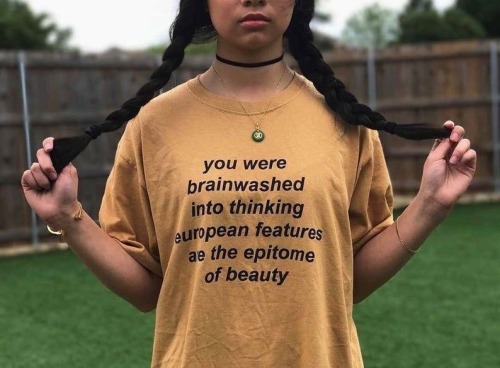
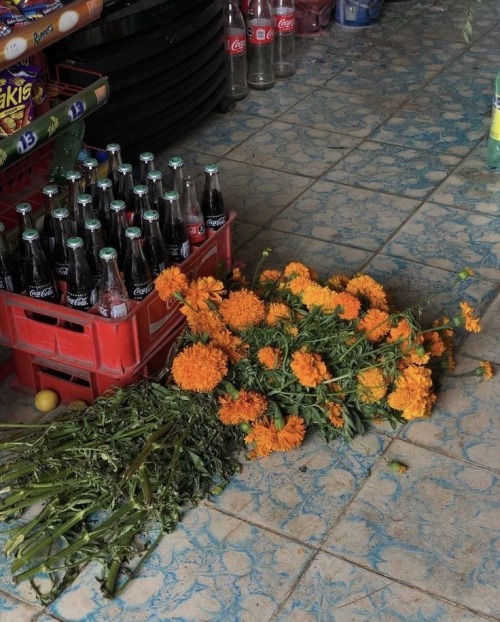
tlaxcaltec on my father’s side, raised in an all-white household. firmly messianic jew.

